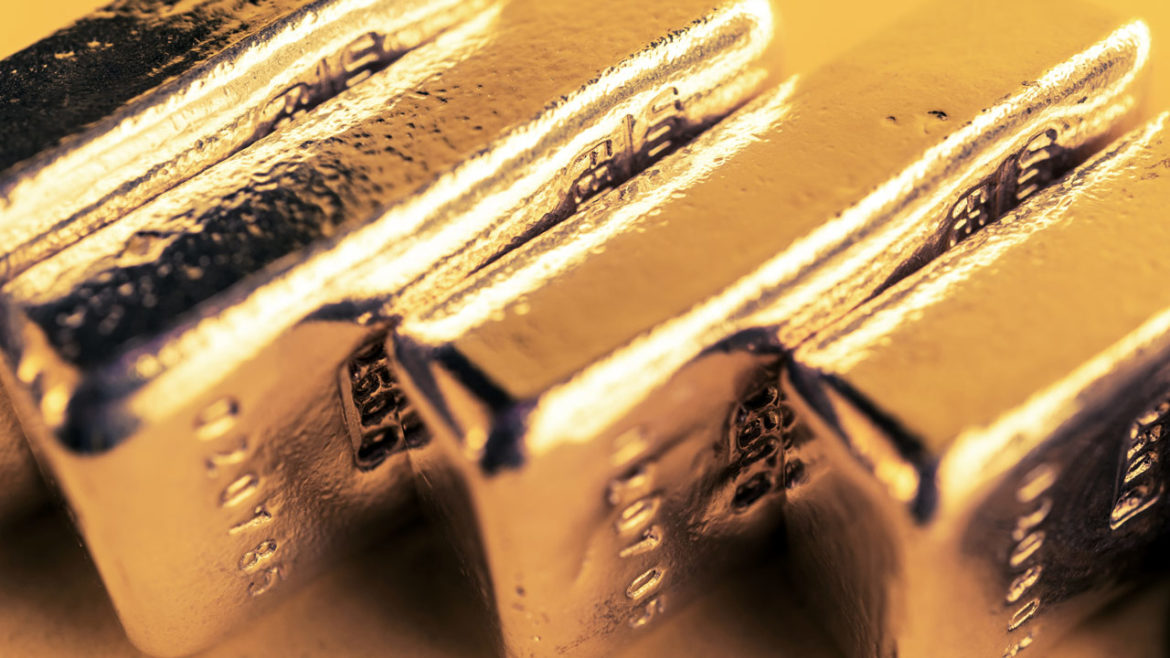Precious metals are apparently waking up. And here is where you can find the best deals.
Site:
Precious metals news
 METALS, ENERGY & MARKET UPDATE SEP 27th: Oil Price Hits New Yearly High While Markets, Metals & Miners Sell off
METALS, ENERGY & MARKET UPDATE SEP 27th: Oil Price Hits New Yearly High While Markets, Metals & Miners Sell offSeptember 27, 2023
While the bears were calling for weak energy prices in the second half, oil hit a new high this year as the world struggles with supply issues. Unfortunately, this is just the beginning for much higher oil and natgas prices in the future as the world hits the Energy Cliff...
Comparing gold only to fiat currencies can only capture its properties so far. This is why we are comparing it to the iPhone. In the realm of tech and economics, the iPhone 15 Pro costs 0.78 oz. of gold, a notable drop from the iPhone 14 Pro's 0.87 oz. and the first iPhone's 0.92 oz. in 2007. For gold investors, it means a cheaper iPhone in gold terms, even though its USD price has increased by 150% since 2007, averaging a 5.9% yearly inflation rate. This highlights the interesting relationship between technology, economics, and gold.
Since 1791, there have been six significant Commodities Supercycles, each spanning 12 to 24 years. We're currently navigating the seventh, which started in March 2020. The previous cycle from 1999 to 2011 witnessed remarkable price escalations: oil jumped from $10 to $150 a barrel, copper rose from 60 cents to $4.60 a pound, gold leaped from $250 to $1921 an ounce, and corn surged from $2 to $8 a bushel. The current trends closely mirror those of the past.
BRICS nations are aggressively divesting from U.S. Treasury bonds in a move against the U.S. economic policies. They dumped $18.9 billion just this month, totaling a staggering $122.7 billion in 2023. China, leading the trend, offloaded $117.4 billion of U.S. debt this year. Other members like Brazil and India have also reduced their holdings, with India even abandoning the U.S. dollar in forex markets. The collective action aims to undermine the U.S. dollar's dominance in favor of local currencies.
The decades-long fiat paper money system has led to global economic instability. Central banks' manipulation of interest rates since 1981 has caused surging debts, devaluation of savings, and promoted speculation over hard work. This has also fueled wars and birthed unsustainable businesses, while exacerbating societal wealth disparities and inflating prices. Gold offers a potential solution as a stable, resistant alternative to such manipulation.
American consumer confidence took a concerning hit this month, more than analysts anticipated, suggesting gloomier economic prospects ahead. The Conference Board highlighted a sharp decline in consumers' outlook for the future, often an early warning of an impending recession. Factors like escalating interest rates and dimming job prospects have raised concerns. Moreover, notable retailers like Target are already feeling the pinch, with sales dwindling for the first time in six years.
 Because it Doesn't Know What Else To Do - The Fed Holds the Fed Funds Rate Steady
Because it Doesn't Know What Else To Do - The Fed Holds the Fed Funds Rate SteadySep 26, 2023 - 09:11:44 PDT
Reading between the lines reveals the Fed's desperate wish for inflation to subside to a politically palatable level without further rate hikes or a looming recession. Yet, their strategy seems rooted in mere "hope" rather than clear foresight. The FOMC members' hesitancy to forecast rate reductions before the end of 2024 speaks volumes, hinting at their underlying concerns about persistent, politically perilous inflation. It's striking, given the FOMC's typical aversion to hinting at further tightening.
August witnessed a drastic 8.7% MoM drop in new home sales, the steepest since September 2022. With the median sales price of new homes slightly declining to $430,300, it's still alarmingly higher than pre-pandemic rates. A Redfin report revealed a worrying trend: about 60,000 home deals, or 16% of homes under contract, fell through. Veteran agents report unprecedented deal cancellations. As homebuilders struggle to bridge mortgage rate gaps, and investors grow wary, the housing market's stability is under serious threat.
A year ago, the UK bond market saw upheaval. Now, there's growing unease over the $25tn US government bond market. The Bank for International Settlements and the US Federal Reserve are alarmed by increased hedge fund bets, especially the high-leverage basis trade. With leveraged positions nearing $900bn, any disruption to the US Treasury market could have global repercussions. Past interventions by the Federal Reserve might be fueling these risky bets, raising concerns among regulators.
The push for a cashless society is growing, backed by digital payment conveniences. However, there's a risk of losing control and privacy. Central bank digital currencies (CBDCs) amplify these concerns by granting governments direct oversight of transactions. Citibank's "Citi Token Services (CTS)" mirrors these CBDC features, signaling an accelerated move towards this model. Protecting oneself involves diversifying assets, like holding physical gold and silver.
Binance, once the dominant force in the crypto world after FTX's crash, is now facing challenges. U.S. agencies' enforcement threats have led to over a dozen senior executives departing and the layoff of 1,500 employees. Binance's market share has decreased from 70% to 50% this year. With the SEC suing both Binance and Coinbase, there are concerns about the future of the crypto industry. If Binance collapses, it could cause a short-term market liquidity crisis, potentially driving crypto prices down significantly. Some traders are even preparing for a potential Binance meltdown.
Sep 26, 2023 - 06:34:44 PDT
JPMorgan Chase has controversially moved significant securities into the held-to-maturity (HTM) category, resulting in an unrealized loss of $36.7 billion. Many of these transfers weren't initially designated as HTM. Despite these alarming practices, CEO Jamie Dimon challenges federal regulators' efforts to increase capital levels for large banks. Widespread unrealized losses across the banking sector total $558.4 billion, with the 25 biggest banks also experiencing a $920 billion decline in deposits, intensifying concerns about the stability of the U.S. banking system.
Longer-term interest rates are surging, negatively impacting stocks and potentially the broader economy. The 10-year Treasury yield hit a 16-year high at 4.52%. This uptick threatens to further depress the housing market and deter corporate investments. Despite market concerns, Fed chair Jerome Powell appears unfazed, prompting critiques from experts who believe the Fed may be underestimating the impact of these rising yields.
JPMorgan's CEO warns of the risk of stagflation and believes the world is unprepared for central banks raising interest rates. He suggests the jump from a 5% to a 7% rate would be notably harmful. Emphasizing caution, he questions if businesses can handle a 7% rate alongside stagflation. Some experts argue such high rates could burst asset bubbles.
Rising interest rates due to Federal Reserve's decisions are straining American finances. Consumers face higher costs for home and car loans, and existing debts are becoming pricier. While the Fed intends to maintain these high rates, families reliant on borrowing are feeling the pressure. New mortgages now average a 7% rate, nearly doubling from two years ago, significantly raising monthly payments. The current borrowing landscape renders homes and cars "completely unaffordable" for many, with households needing substantially more income to manage costs.
Yet another country wants gold.On Monday (Sept. 25), the Bank of Tanzania (BoT) announced it is buying gold from domestic sources to establish its own reserves.
 Americans Worried About a Credit Crunch; What Happens When Consumers Can't Charge It?
Americans Worried About a Credit Crunch; What Happens When Consumers Can't Charge It?September 26, 2023
Americans are worried about a looming credit crunch. That's a big problem for an economy that runs on credit cards.One of the reasons for economic optimism you'll hear bandied about out there in the mainstream is "the American consumer is strong" and consumer spending is "holding up" despite price inflation. But nobody seems to ask an important question: how have Americans been able to continue spending?
In 2023, gold continues to be a valuable asset for diversified portfolios, showing resilience even with market shifts. The World Gold Council reported a 20% year-over-year increase in gold investments, mainly driven by bar, coin, and OTC market growth. Historically, gold thrives during financial turmoil, offering portfolio diversification and liquidity. Since 1971, gold has matched equities in returns and surpassed bonds. Over the past 20 years, it has outperformed most major assets with a 15% annual increase in global investment demand. High demand from institutional investors, central banks, and markets like China bolster gold's value, emphasizing its portfolio benefits.
In Q2 2023, global gold reserves peaked at 38,764 tonnes, surpassing the 1965 record. This shift suggests a new gold era, with central banks diversifying from the US dollar, especially since the 2008 crisis. As gold's value has grown by 66% and its share in international reserves rises, it's clear that its significance in the global monetary system is increasing.
Sep 25, 2023 - 12:21:24 PDT
The SEC's 2012 rule for a Consolidated Audit Trail has raised significant privacy concerns. Originally intended to monitor trading activity following the 2010 flash crash, the rule now mandates tracking of every trade order, modification, and execution across U.S. markets. Alarmingly, it also collects personal information like account and Social Security numbers, accessible to multiple organizations, 3,000 outside contractors, and susceptible to hacking attempts from international cyber threats.









